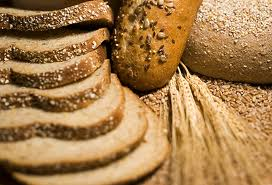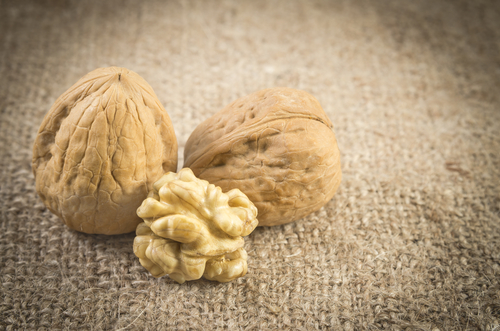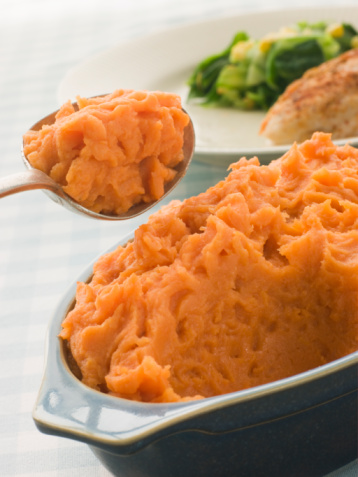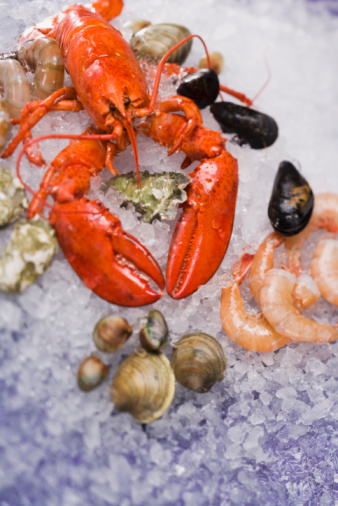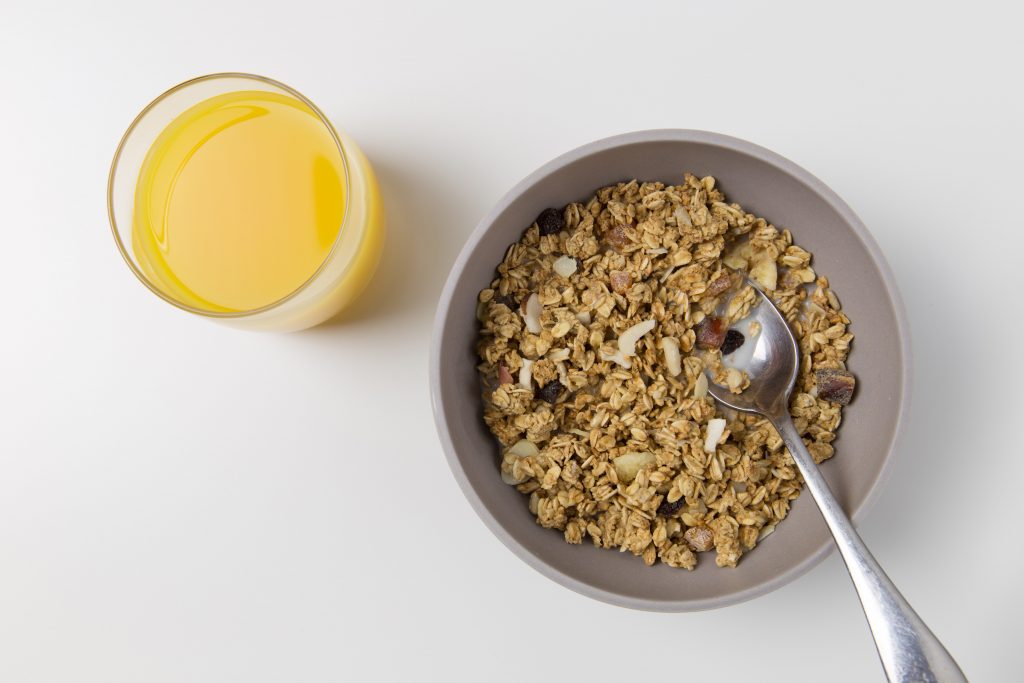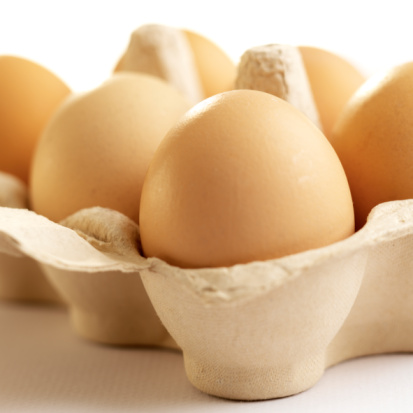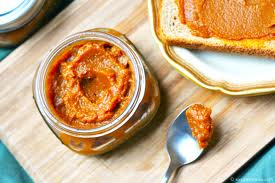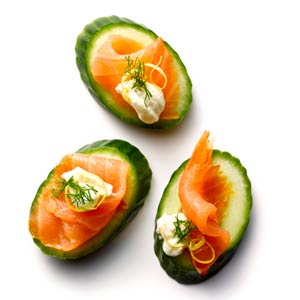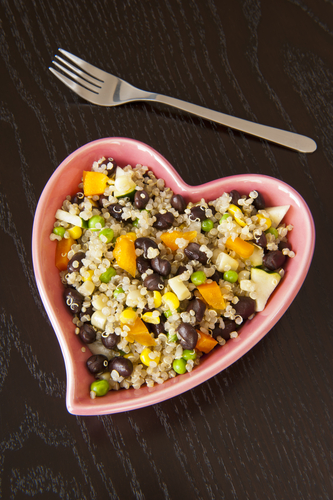13 Secrets the FDA Won't Tell You
1. When it comes to contaminated food, we have been deceptively kept in the dark.
According to the Centers for Disease Control (CDC), 48 million Americans or one out of every six people get sick each year from food poisoning. At least 128,000 Americans are hospitalized, and 3,000 die after eating contaminated food. Not until very recently, the food safety system headed by the Food and Drug Administration (FDA) did little to nip problems before they blew up. David Plunkett, a senior staff attorney in the food safety department of the Center for Science in the Public Interest says that people had to get sick to budge the FDA into action and try to find out what was happening. This was probably largely due to recalls being an ever-increasing time-expense on healthcare, according statistics from RASMAS, a web service that provides information to help the public reduce legal risk, improve patient safety, and simplify regulatory reporting.
Thankfully, the public’s angry push on safety and stricter regulation is getting the FDA a little bit more proactive. The FDA Food Safety Modernization Act (FSMA) was signed into law by President Obama on January 4th, 2011. It aims to ensure the U.S. food supply is safe by shifting the focus of federal regulators from responding to contamination to preventing it. This agency is the much-needed muscle to inspect high-risk foods and products and immediately pull them off the market if needed. Plunkett says that one of the things that nobody really talked about was that the FDA, even when they knew a food was dangerous, rarely orders a company to recall it. In the past, the FDA instead had to negotiate a recall with the manufacturer, a process that could take weeks, so speeding up the process is a big victory for public health.
2. More inspections = More $$$. That is not in our country’s budget.
How much do recalls cost the country annually?
Recalls of consumer products (all industries, not just FDA) cost the country over 700 billion dollars annually!!
The new food safety law requires the FDA to conduct more frequent inspections of manufacturing facilities, inspect a greater percentage of imports, and send inspectors abroad to check out foreign companies. America’s FDA budget is running on the really low side, not adequate by any means, and it is certainly not adequate to implement the new Food Safety Modernization Act. The Congressional Budget Office has estimated that implementing the food safety law will cost the FDA an additional $1.4 billion between 2011 and 2015. That might sound like a lot, but compared to the cost of foodborne illnesses, which costs the U.S. $152 billion a year, it is a painfully slow start, but a start, nonetheless. There needs to be better planning and funding for quality and routine inspections. The FDA will need to work with Congress to obtain the necessary boost in funding.
3. At the farmer's market, how do you know you are buying organic and locally grown?

Eating locally may be in trendy, but because of slim regulatory inspections by the FDA and USDA at local farmer’s markets, people may be taking more of a risk than they realize. Under the new law, the FDA was given authority to write new produce-safety standards governing how farmers grow, package and ship high-risk foods like spinach or tomatoes. But small farms with direct sales to consumers of less than $500,000 a year are exempt from those new rules. And small manufacturers with less than $5,000 in sales, such as those selling at small farmers’ markets, are exempt from the organic certification process (but can still label their products as organic), and must be truthful in their label claims and comply with the new government standards. Individuals or companies who sell or label a product as organic when they know it does not meet USDA standards, can be fined up to $10,000 for each violation. Operating under a modified, simplified version of the food-safety system can be tricky for the consumer. Consumer advocates have thus pushed to make these exemptions as narrow as possible, because food poisoning outbreaks linked to small producers do happen, even if they affect a relatively small number of people.
4. It is fine to buy drugs across the border
It's illegal to import medication from abroad, including foreign-made versions of drugs that have been approved for use in the U.S. But with senators organizing bus trips for seniors to buy drugs in Canada, it is no secret that individuals are not prosecuted for bringing back legal meds from other countries (as long as they are for personal use). Christopher Kelly, a spokesman for the FDA, confirms that the agency focuses enforcement only on imports that are intended for resale, but notes that it can detain personal imports at the border. "Almost all prescription orders personally imported reach the consumer," says Gabriel Levitt, the vice president of PharmacyChecker.com, a website that checks out online domestic and international pharmacies. While there certainly are dangerous drugs sold over the web, lab tests conducted by researchers at the American Enterprise Institute found that international pharmacies which had a physical address and staff contact information on their websites tended to supply safe, legitimate drugs, says Roger Bate, the AEI fellow who led the study.
5. Majority of medical devices skip clinical testing before being approved
More than 90% of medical devices approved by the FDA go through the 510K process, which doesn't require any clinical trials before the device goes on the market, inspections of the facility where the device is being produced, or post-market studies once the device is already being sold. The process is designed to allow companies to skip conducting clinical trials for low-risk devices that are similar to another device already on the market.
In February 2011, the FDA announced plans to create an even faster-track review process for especially innovative medical devices, which was followed a day later by a major article in the New York Times business section highlighting complaints by a few small device manufacturers and venture capitalists that the FDA review process had become too stringent and was chasing jobs abroad.
After reviewing every FDA recall of medical devices between 2005 and 2009, authors Diana Zuckerman and Paul Brown of National Research Center for Women & Families and Steve Nissen of the Cleveland Clinic found that only 21 of 113 recalls of devices whose malfunction could have caused serious health problems or death went through clinical trial testing prior to approval. Of those 113 recalls, 78 % received either a cursory or no review, with sensitive cardiovascular devices like internal and external defibrillators accounting for nearly a third of the recalls.
Recognizing that the 510K process had created a huge loophole for devices whose malfunctioning would pose a serious risk to human health, the FDA asked the Institute of Medicine to conduct a full-scale investigation into the device review process. That report, released in July in 2011, concluded that, “It is unclear—and the committee concludes that it is indeterminable, given current information— whether the 510(k) process over the last 35 years has had a positive or negative effect on innovation. . . and found that the current 510(k) process is flawed based on its legislative foundation.” The committee recommended that the FDA develop and implement a program of continuous quality improvement to increase predictability, transparency, and consistency in all regulatory decisions for devices and to address emerging issues that affect decision making.
This comes as no surprise, since every report that has looked at this relatively obscure regulatory arena has found the same thing. A 2009 Government Accountability Office report found that more Class III (high-risk devices whose malfunctioning would pose a serious risk to health or death) got cleared through the 510(k) process between 2003 and 2007 than through the more stringent pre-market approval (PMA) process, which requires clinical trial testing. “Although Congress envisioned that class III devices would be approved through the more stringent PMA process, and the Safe Medical Devices Act of 1990 required that FDA either reclassify or establish a schedule for requiring PMAs for class III device types, this process remains incomplete,” the GAO noted in its typically dry and understated fashion.
6. We can't prevent drug makers from hyping "off label" uses.
Doctors can legally prescribe a medication to treat any condition they want, including conditions the FDA has not approved the drug to treat. But it is illegal for drug companies to promote such "off label" uses of their products. But that doesn't seem to stop them from doing it, as multiple settlements with major manufacturers demonstrate, says Larry McNeely, a health care advocate with the U.S. Public Interest Research Group. The FDA in not equipped with manpower to review more than about 1% of the marketing materials companies send in for approval, and there are plenty of subtler ways for companies to promote off-label uses, like sending doctors who've written papers advocating off label uses around to conferences to promote their work, or hiring ghostwriters to pen opinion pieces promoting such research.
7. Drug companies do not always complete clinical trials.
In a small but growing number of cases, the FDA has allowed companies to stop clinical trials early, as soon as the trial has found a statistically significant difference between the placebo and the treatment being tested. A 2005 study published in the Journal of the American Medical Association found that the percentage of trials published in major medical journals that had been stopped early "for benefit," meaning the treatment arm of the study has diverged significantly from the placebo arm, rose from 0.5% in 1990-1994 to 1.2% in 2000-2004. The study found that these cut-short trials often showed "implausibly large" benefits from the drugs being tested.
Many of the drugs in question were cardiovascular treatments or cancer drugs, according to the study, like a trial of blood-pressure drug bisoprolol in patients undergoing elective vascular surgery, which stopped after recruiting less than half of the number of subjects originally planned to test. A benefit that shows up early on in a trial might disappear by the time it's finished. That is why it is so important that studies are completed. A decision to stop a trial early is typically made as part of a formal process with a review board, and is done when there's such a clear benefit that it's no longer ethical to give patients a placebo.
8. Our conflict-of-interest policy shuts out experts.
When reviewing innovative new drugs, the FDA will often convene an advisory panel of outside experts to review the research on a drug and make recommendations. According to a conflict-of-interest policy adopted at the end of the Bush administration, those panels do not include anyone who has taken money from the company whose drug is under consideration. This excludes the people who have written key papers in the field. What ends up happening is the FDA will often get bad advice from these panels, because the people involved are not actually the real experts in that particular disease.
The FDA can grant a waiver if a particular person's expertise is considered essential, but this exception has its criticisms for having conflicts.
9. We want to help pharma investors.
As part of a broader Obama administration transparency push, the FDA has announced that it is going to start offering the public detailed explanations when it rejects a drug or asks a company for more studies. The agency is doing everything it can to improve public health by explaining the decision-making process, while continuing to protect patient confidentiality and industry trade secrets. In the past, the FDA would tell a company exactly what was wrong with its application, but that information was confidential, and drug makers could release as much or as little detail as they wanted. Providing an explanation for a rejection will give investors a clear understanding of whether a drug maker has hit a minor snag or a major obstacle.
10. Eat your fish. Don’t ask where it came from because we won’t tell you.
The government agency responsible for protecting public health and safety plans to sign off on a hugely controversial product, genetically modified fish, but wants to keep the gory details from Americans who will eventually eat it. To keep information secret, the FDA is assessing the fish as a veterinary drug because it allows the agency to deliberate behind closed doors. The classification also permits critical data and research submitted by the company that will create the product to remain confidential.
Called AquaAdvantage, the altered salmon could be served in U.S. households within the next few years. So far FDA scientists claim the modified fish is “as safe to eat as food from other Atlantic salmon” and that they have seen “no biologically relevant differences” between the real fish and its artificial counterpart.
The only difference between the natural and enhanced salmon is that the modified species is given a special gene and growth hormone that makes it develop twice as fast. The Massachusetts company (Aqua Bounty Technologies Inc.) that came up with the idea claims its specially engineered version is identical to the Atlantic salmon except for the speed of its growth.
Those willing to take a chance on this lab creation should at the very least have full disclosure from the government agency that approves it. The FDA, after all, gave legal rationale for its silence: Some clinical trial data are considered "trade secrets," or commercially protected information, and thus are exempted from release under the Freedom of Information Act. Since the FDA doesn't routinely perform comprehensive reviews of drugs once they are on the market, when uncommon but deadly side effects tend to be picked up, independent researchers are often the only hope of catching such flaws. But the trade-secrets rule can leave researchers in the dark about the most worrisome data—negative results that support a failed application to market a drug. No wander the FDA is notorious for compromising public health to protect the profits of companies that pay it hundreds of millions of dollars in “fees” to get their products approved.
11. Thinking about going RAW? Not if the FDA has anything to say about it. You WILL drink from our Dairy farms.
The popular mantra, in one form or another, is one that you may have heard someone say in response to the idea of drinking unpasteurized milk, or raw milk, which is, “dangerous,” and the only way to make it safe for human consumption is to pasteurize it (killing everything nutritious about milk too). The Food and Drug Administration and the US Centers for Disease Control and Prevention continue to marginalize this health-promoting "superfood" by publicly repeating such lies against it.

Both the FDA and CDC continue to allege that raw milk is dangerous and that it leads to disease, all while propagating the false notion that the only safe milk is pasteurized milk. They often cite seemingly-scientific numbers and data about outbreaks allegedly related to raw milk in defense of these claims, and many people eat up this misinformation without giving it a second thought. As a result, a general public bias against raw milk has been firmly established and in motion for many decades now, despite the fact that the parents and grandparents of many of those who today decry raw milk actually drank raw milk when they were growing up (and many lived healthy, vibrant lives as a result).
Dispelling the myths and taboos surrounding raw milk is no easy task, as most of the "official" information coming from government sources is biased against raw milk. By continually denouncing the safety of raw milk and scaring the public with (false) statistics, the war against this wholesome food appears to be a success -- except for the fact that the truth is finally coming out, and increasing numbers of people are awakening and turning to raw milk for improved nutrition and better health.
The following are examples of how the FDA and CDC manipulate statistics and lie about raw milk and conceal deadly truth about pasteurized milk:
In 2007, the FDA and CDC jointly issued a press release entitled, FDA and CDC Remind Consumers of the Dangers of Drinking Raw Milk. This report contains frightening statistics, which claim that between 1998 and 2005, there were 45 outbreaks, 1007 cases of reported illness, 104 hospitalizations, and two deaths "associated" with the consumption of raw milk. These figures are completely false. The report cites an issue of the CDC's Morbidity and Mortality Weekly Report from March 2, 2007, as the source of this data. But a quick look at this cited report reveals that the numbers used by the FDA and CDC in their own report do not even exist.
Try performing a search for yourself to find the data or report on the CDC.gov website. You will be unable to find any trace of data that supports the data found in the joint agency report. And since neither agency has been willing to address requests for clarification about the actual source where the data can be found, there is no other option but to assume that they simply made it all up in order to perpetuate the culture of bias and stigma against raw milk.
12. Worst cases of outbreak do not yield reminders or cautions about eating those specific foods
The Center for Science in the Public Interest (CSPI) put out a report a few years ago on outbreak and illness cases that occurred between 1990 and 2004. During this time, there were 639 reported outbreaks and 31,496 reported illnesses caused by produce, which represents 38 percent of all foodborne illness cases. Poultry was responsible for 541 outbreaks and 16,280 illnesses, representing 20 percent of all foodborne illness cases.
The list goes on to cite beef, eggs, and seafood, all of which are implicated in causing far more foodborne illness cases than even the most inflated and fictitious raw milk illness statistics. And yet the FDA and CDC have never once issued warnings or "reminders" about not eating any of those foods.
13. Chicken Meat sold in U.S. contains arsenic!?
After years of sweeping the issue under the rug and hoping no one would notice, the FDA has now finally admitted that chicken meat sold in the USA contains arsenic, a cancer-causing toxic chemical that's fatal in high doses. But the real story is where this arsenic comes from: It's added to the chicken feed on purpose!
Even worse, the FDA says its own research shows that the arsenic added to the chicken feed ends up in the chicken meat where it is consumed by humans. So for the last sixty years, American consumers who eat conventional chicken have been swallowing arsenic, a known cancer-causing chemical.
Until this new study, both the poultry industry and the FDA denied that arsenic fed to chickens ended up in their meat. The fairytale excuse story we've all been fed for sixty years is that "the arsenic is excreted in the chicken feces." There's no scientific basis for making such a claim... it's just what the poultry industry wanted everybody to believe.
But now the evidence is so undeniable that the manufacturer of the chicken feed product known as Roxarsone has decided to pull the product off the shelves. And what's the name of this manufacturer that has been putting arsenic in the chicken feed for all these years? Pfizer, of course -- the very same company that makes vaccines containing chemical adjuvants that are injected into children.
Technically, the company making the Roxarsone chicken feed is a subsidiary of Pfizer, called Alpharma LLC. Even though Alpharma now has agreed to pull this toxic feed chemical off the shelves in the United States, it says it won't necessarily remove it from feed products in other countries unless it is forced by regulators to do so. But even as its arsenic-containing product is pulled off the shelves, the FDA continues its campaign of denial, claiming arsenic in chickens is at such a low level that it's still safe to eat. This is even as the FDA says arsenic is a carcinogen, meaning it increases the risk of cancer.
Not surprisingly, the National Chicken Council agrees with the FDA. In a statement issued in response to the news that Roxarsone would be pulled from feed store shelves, it stated, "Chicken is safe to eat" even while admitting arsenic was used in many flocks grown and sold as chicken meat in the United States.
If you are curious as to the policies and procedures of the United State Food and Drug Administration, please visit their website: www.fda.gov.
The FDA’s Web site is the entry point to a wealth of information about all of our programs and product areas. There, you can find information for consumers, health professionals, industry, and the latest news on FDA-regulated products.
